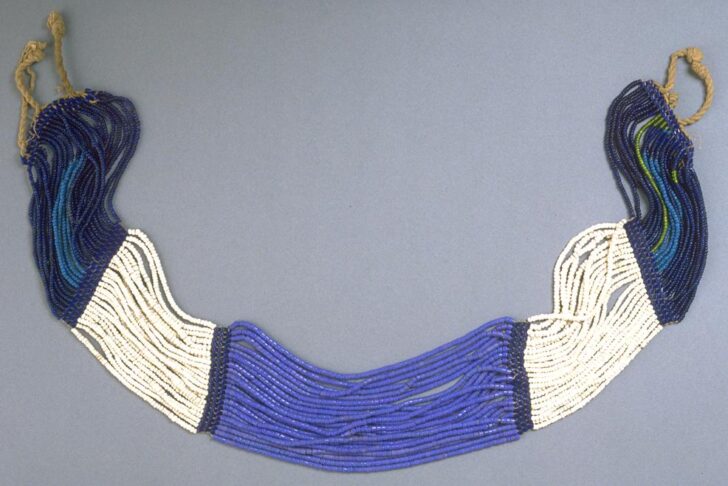Belt
Northern Cameroon; Northeastern Nigeria; Southern Chad

Description
Subject Matter:
This object listed as made by Kirdi peoples, while most likely correct, is not without issue. “Kirdi”, meaning pagan, was the label given to the various peoples from northern Cameroon, northeastern Nigeria, and southern Chad by neighboring Fulani and Kanuri peoples because they did not practice Islam, while the latter do. The people collectively known as “Kirdi” are actually many different cultural groups with their own customs. However, due to a lack of information on where exactly this object came from, it is not possible to say with certainty which group of people created it.
Belts of brass rings or beads were often worn with women’s aprons. In some cases, the apron was worn by folding it over the belt. As more objects displayed a woman’s wealth and status, particularly those made of brass, women wore multiple belts, necklaces, and other jewelry.
References Cited:
Gebauer, Paul. 1979. Art of Cameroon. Portland, Or.: Portland Art Museum.
Lembezat, Bertrand. 1961. Les populations païennes du Nord-Cameroun et de l'Adamaoua. Paris: Presses Universitaires de France.
Lembezat, Bertrand. 1952. Mukulehe; un clan montagnard du Nord-Cameroun; coutumes, rites, croyances. Paris: Berger-Levrault.
Northern, Tamara. 1984. The Art of Cameroon. Washington, D.C.: Smithsonian Institution.
Page, Donna. 2007. A Cameroon World. New York: QCC Art Gallery Press.
Physical Description:
Belt made from multiple strands of small beads. The center of the band is blue, flanked by two white sections. The outer sections of the belt are dark blue. At each end are short strings.
Usage Rights:
If you are interested in using an image for a publication, please visit https://umma.umich.edu/request-image/ for more information and to fill out the online Image Rights and Reproductions Request Form.